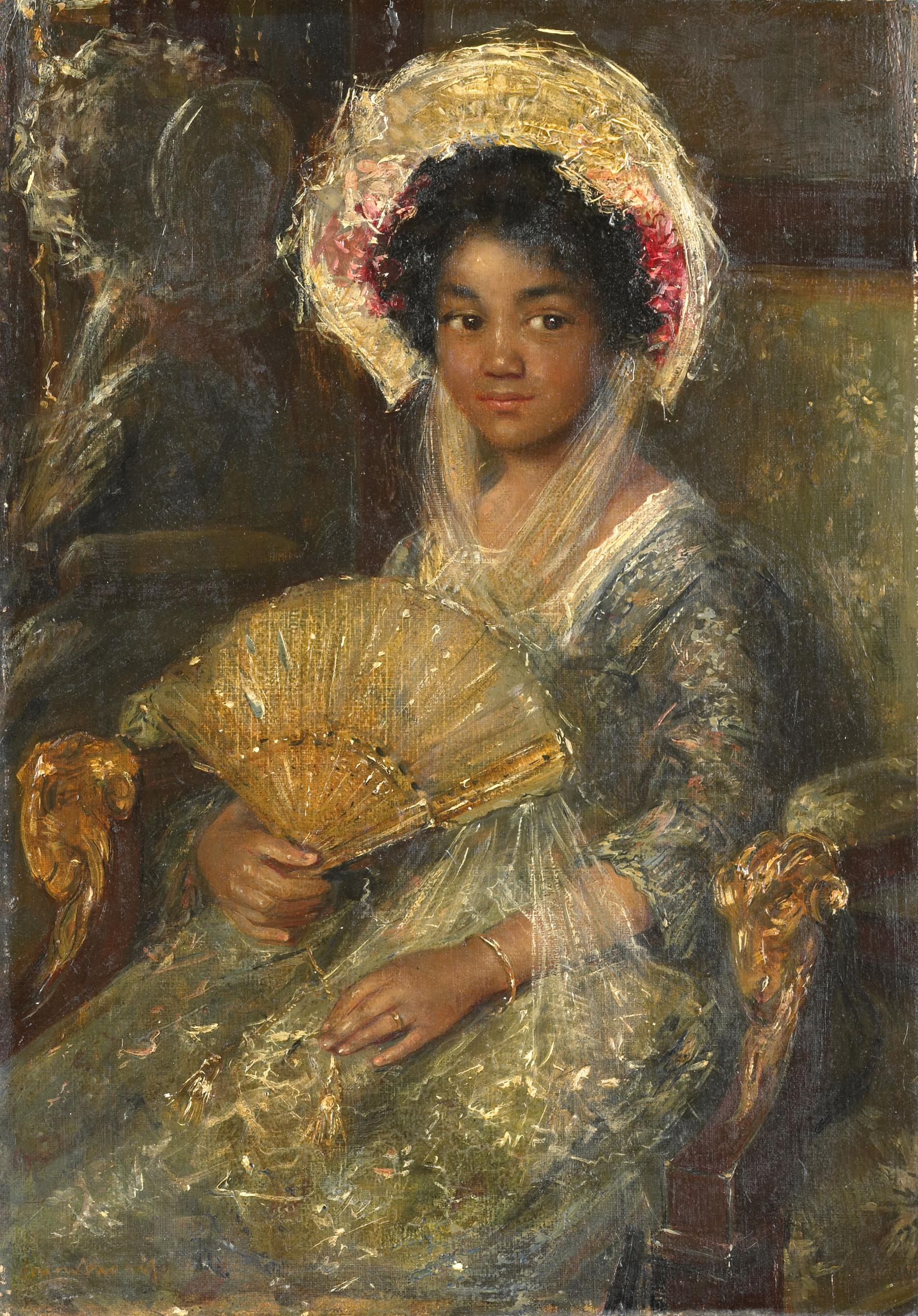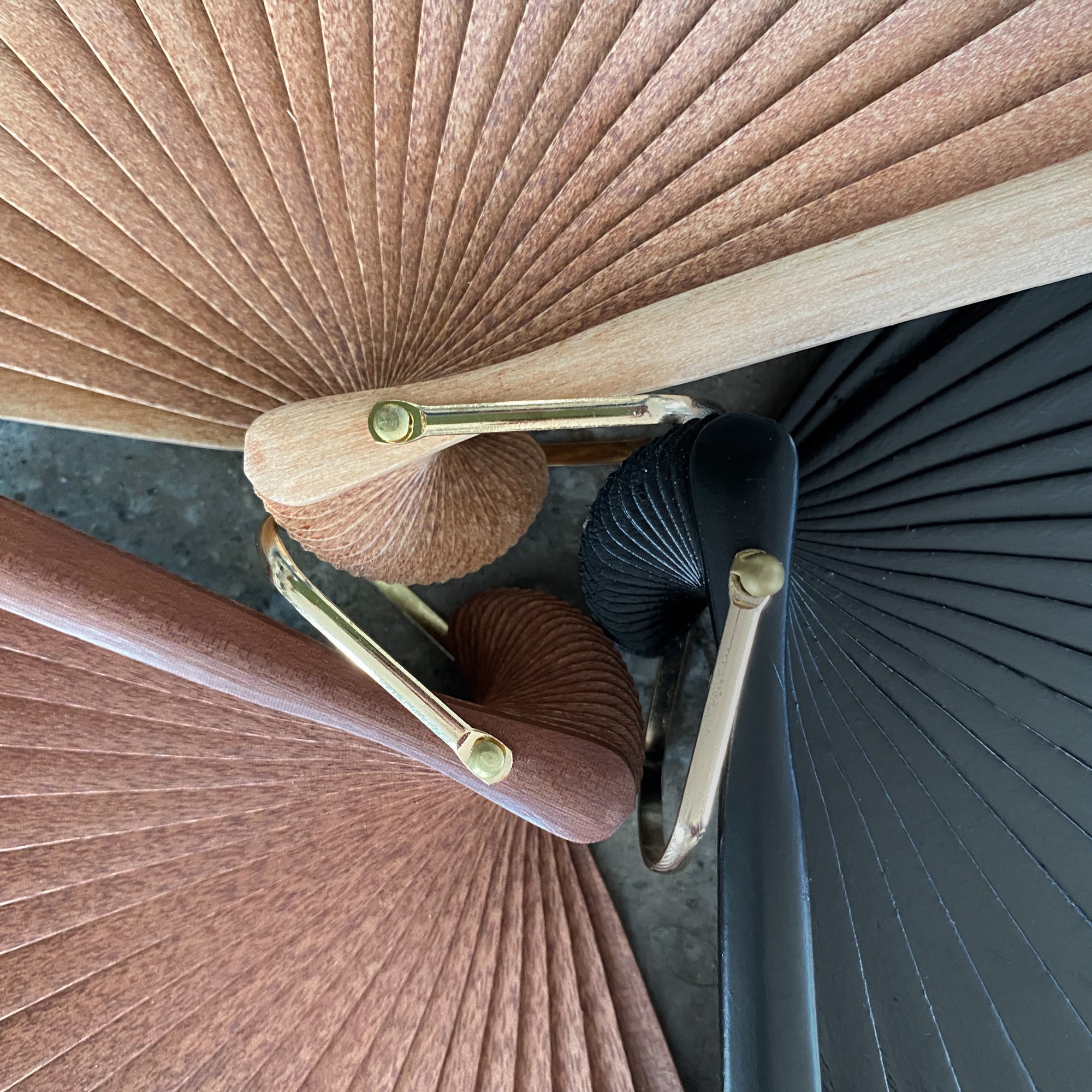How many products can you say have stood the test of time for centuries without a radical change in shape? Indeed, not many. But the fan has turned out to be here to stay. The history of the fan began at least more than 4000 years ago, because images of fans have already been found on the tomb of Tutankhamun in Egypt. And also in Greek Antiquity evidence of the existence of fans has been found. Read this article to discover the history of this universal product in a nutshell.
Fly repellers
Whereas the fans were sacred objects for the Egyptians as an attribute of the pharaohs, they served as a practical tool for the ancient Greeks. With a fan they kept flies at a distance, and they helped to light fires in the kitchen or at an altar. In the Christian part of Europe, too, the flabellum, a large fan on sticks with ostrich feathers, was already used in the 6th century to drive away insects that wanted to snack on the consecrated bread and wine.

Pius XII with Flabellum
https://commons.wikimedia.org/wiki/File:Papst_Pius_XII.,_Kr%C3%B6nung_10._Jahrestag.jpg
Wisdom and personal identity
Although the fan was already used in Europe, we usually associate the origin of the fan with China. And for good reason, because hand fans have been a symbol of wisdom in art and culture there for centuries. Fans also contributed to the identity of the user. They were a personal expression that could also reflect social status. They were made in many shapes and from different, sometimes expensive, materials, including silk, bamboo, paper, wood and feathers. Often short poems were calligraphed or painted on them. In the 7th century, the Chinese dance fan was developed. There were also special moon-shaped fans for brides and large (imperial) ceremonial fans.
Japanese folded fans for Chinese men
The folded Chinese fans date back to the 10th century and were originally a Japanese invention from the 6th century. These Japanese fans were not very popular in China at first. They were mainly used by servants and other people with a lower social status. But during the Ming Dynasty (1368 -1644) they became fashionable.
In general, the folding fans were intended for men and the stiff unfolded variants for women, but that was not a strict law. In China, the 'brise fan' was later developed based on the folding fan. This fan was made only of wood (or other stiff materials) with milled motifs in it.

Woman with stiff oval painted fan, detail from "Appreciating Plums" by Chen Hongshou (1598–1652), Chen Hongshou, Public domain, via Wikimedia Commons
Re-entry of the fan in Europe
In the 15th and 16th centuries, the first Chinese and Japanese fans came to Europe. They were probably imported by Portuguese sailors. It was not until the 18th century that they became popular in European social circles. Initially, the fan gained popularity mainly in Spain, where flamenco dancers used the fan. Partly because of this, the fan also became popular with the nobility. Especially in the south of Europe. When the Protestant faith was banned in France in 1685 (Edict of Nantes), many French people fled to northern countries, where the fan also made its appearance there. Also with the royal families. During this period, several fan makers in Europe started making new, more modern designs that matched European fashion.
Fans of ivory, shield pass, gold, silver and jewelry.
Over time, the material used to make the fans changed. The frames of the preserved 15th-century fans are usually made of bone or ivory, often decorated with mica. The 'blade' of the fan often consisted of pieces of leather that were slid over the frame ends. The non-folding fans were decorated with feathers and jewels. Still, the handy folding fans were the most popular. In the 17th century, the fan was often made of ivory or tortoiseshell, sometimes decorated with silver or gold. In this epoch we see fans where the fan blades are very close together, without much space between them. Religious and classical images and flowers were painted on the fans.
From the 18th century onwards, fans became more artistic. Curious about the more recent history? Then read on!

Image on top: Folding fan with daylilies, rocks, and a poem, painted by the Qianlong emperor for Empress Dowager Chongqing, China, 1762 AD, ink and color on paper, bamboo - Peabody Essex Museum - DSC07993.jpg, Daderot, Public domain, via Wikimedia Commons


